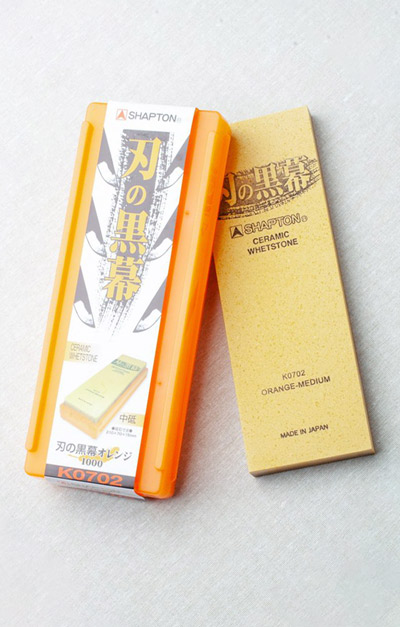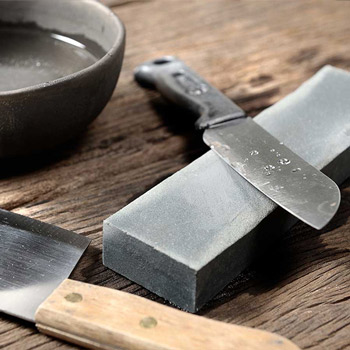
The whetstone is a tried and true solution for extending the life of your kitchen knives. This simple sharpening tool requires no electricity, minimal space (no work bench required) and has been used for centuries to maintain and sharpen a variety of blades.
Understanding how to sharpen and hone your kitchen knives and other cutlery on a whetstone is a satisfying skill with a practical outcome, as a sharp knife is a safe knife. Is it time to add a sharpening stone to your home?
What Is a Whetstone?
A whetstone is a flat, sharpening tool made of abrasives, that is used to create a new cutting edge on a dull knife. Many chefs rely on whetstones to enhance the safety and effectiveness of their kitchen tools.
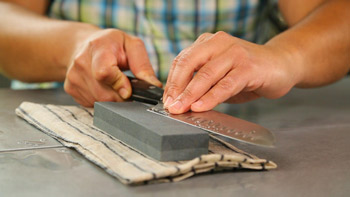
How Does It Refine Knives?
Over the course of several uses, the blade of a knife will become worn, developing a jagged texture. Though not visible to the naked eye, these microscopic imperfections create a dull edge. A whetstone takes off this dull edge by creating a thin layer of metal to create a new, sharper, cutting edge.
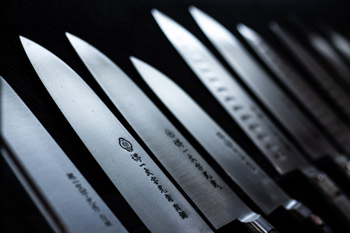
Different Grades of Abrasives
Sharpening stones come in an astonishingly wide range of grades, with rough grits beginning at 240 and highest-range fine grits in the upper thousands. Below are three of the most popular groupings of stone grades. Which whetstone grit size meets your requirements?

Coarse Grit Size
Such a coarse grit is reserved for the dullest of knives. Rarely will you need a grit of less than 800. Knives with badly damaged edges may be smoothed with a coarse grit prior to honing with medium to fine grit stones.

Medium Grit Size
A medium grade of 800-2000 is designed to be all-purpose and is the most common of the stones. Most kitchen knives and woodworking tools will not need a low-, high- and medium-grit whetstone to achieve a quality edge; a medium-grit sharpening stone will do.

Fine Grit Size
A fine grade whetstone with a grit of 3000-6000 will appease your inner perfectionist. After sharpening your cutlery tools on a medium grit, follow up with a few swipes against a fine grit stone to polish and refine the cutting edge of each knife.
Best Customer Product on the Market
It is not essential to own the full range of sharpening stone grits. If you are on a budget or just want to keep things simple, a 1000-grit whetstone is good for the majority of customer needs.
We are especially fond of the 1000-Grit Kuromaku Professional Ceramic Whetstone created by Shapton, a veteran sharpening stone manufacturer. Tempered glass is used in this medium-grit stone to create diamond-like hardness, ensuring you’ll get many years out of your Kuromaku.
The 1000-Grit Kuromaku is distinguished by its vibrant orange color and a unique stone holder which can double as a storage case. Before its first use, you’ll need to submerge the Kuromaku Professional Ceramic Whetstone in water for no more than five minutes–much less time than a natural stone needs. Every use afterwards requires only a splash of water.
Though priced slightly above most budget models, it is still affordable and you certainly get what you pay for with the Orange Kuromaku Whetstone. It’s durable, hones quickly, the stone base is sturdy and the dense glass stone is highly resistant to mildew.
Where Does the Term Come From?
The word whet in whetstone means “to sharpen.” Versions of it can be found in many old European dialects, though we rarely see this word outside of referring to the term nowadays.
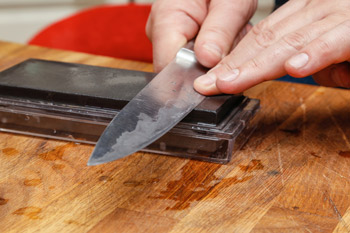
What Else Can It Sharpen?
It is commonly used to sharpen kitchen knives, but a whetstone can double as a sharpener for other bladed items like scissors, woodworking tools, kitchen cutlery or reusable razor blades as well.

Natural vs. Artificial – The Advantages and Disadvantages to Both
Artificial Stones
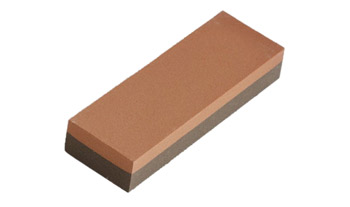
Artificial stones may be made from silicon carbide, aluminum oxide, ceramics or manufactured diamond coatings. In general, artificial stones sharpen knives faster than natural stones. Because of their cost effectiveness and consistent graining, synthetic stones have become the preferred choice for most consumers.
Natural Stones
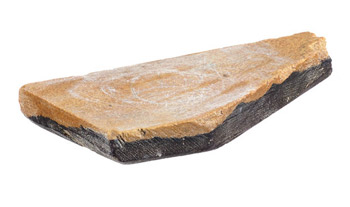
Natural stones are composed of sedimentary quartz-based rock such as novaculite. Stunning gradations of colors can occur in these natural stones, making them double as a desirable collector’s item.
Though they are more expensive, the bond strength of high-grit natural whetstones can create a quality edge on low-alloy steels impossible to achieve with even the best of synthetics. However, natural whetstones will not be capable of honing knives with a high content of hard carbide.
Is There a Difference Between an Oil Stone and a Water Stone?
Yes, there is a difference. Let’s take a closer look at both to find out which traits distinguish an oil stone from a water stone.
Oil Stones
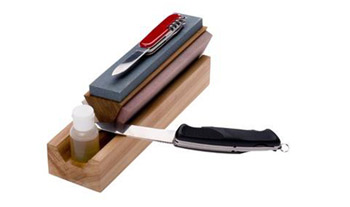
Arkansas Whetstones and India Stones fall under the category of oil stones. They come with the perk of never wearing down, as they are harder in comparison to water stones. Unfortunately, their hard surfaces do not create a slurry during sharpening, making the honing process tedious and time consuming.
Water Stones

The majority of whetstones are water stones. Some require soaking for a full 15 to 20 minutes before use, while others need only a splash of water before sharpening can begin. A good synthetic water stone can sharpen knives quickly, making it a popular choice.
All water stones becomes uneven with use. One way of maintaining your water stone is by using a flattening stone with 400 grit or higher. Never use honing oil on a stone labelled as a water stone.
Popular Articles on ComproGear
TikTok Rose Toy comprogear.com/rose-toy/
Best Compression Socks for Edema comprogear.com/best-compression-socks-for-edema/
How Long To Wear Compression Socks for Edema comprogear.com/how-long-to-wear-compression-socks-for-edema/
Plus Size Compression Socks comprogear.com/plus-size-compression-socks/
Compression Socks for Men comprogear.com/compression-socks-men/
How to Use a Sharpening Stone
Preparation
Glass stones like the Shapton will need just a splash of water across their surface before use. Many other natural and synthetic water stones need a full 15 to 20 minutes to soak before using. If you own an oil stone, apply a small amount of honing oil across the surface and lightly rub it into the stone.
Finding the Angle
Finding the right angle to sharpen your knife at can be challenging. You may wish to purchase an angle guide or to use two or three stacked coins as a guide.
- Place the flat side of your knife against the whetstone.
- Shift it slightly so that it sits diagonally across the whetstone. The edge to be sharpened should be facing outwards.
- Place two fingers where the edge of the knife meets the surface of the whetstone.
- Slowly lift the knife’s flat side away from the whetstone until the edge to be sharpened lays flush with the stone. Use your fingers to feel for the moment the knife’s edge and the stone are flush.
- Hold the knife at this angle throughout the sharpening process.
- (Optional) you can strop your knife with a leather bench strop for a nice mirror shine!
Consistency
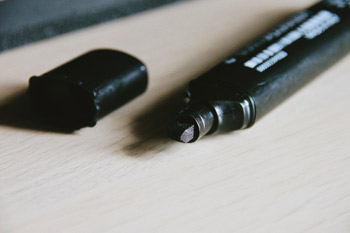
To ensure you are consistently sharpening the entire length of the knife, use this tip: color the edge to be sharpened with a black permanent marker on both sides. By using this method, you’ll visibly notice the silver of the knife showing through in areas where it has been sharpened.
Knife Cutting Test

You’ll know your knife is adequately sharpened when you can slice through a piece of paper or tomato with ease. You will also cut through other ingredients such as fish or other meats with better ease.
Still not sure you’re ready? Watch a professional sharpen a knife with a whetstone.
Do You Need to Clean a Sharpening Stone?
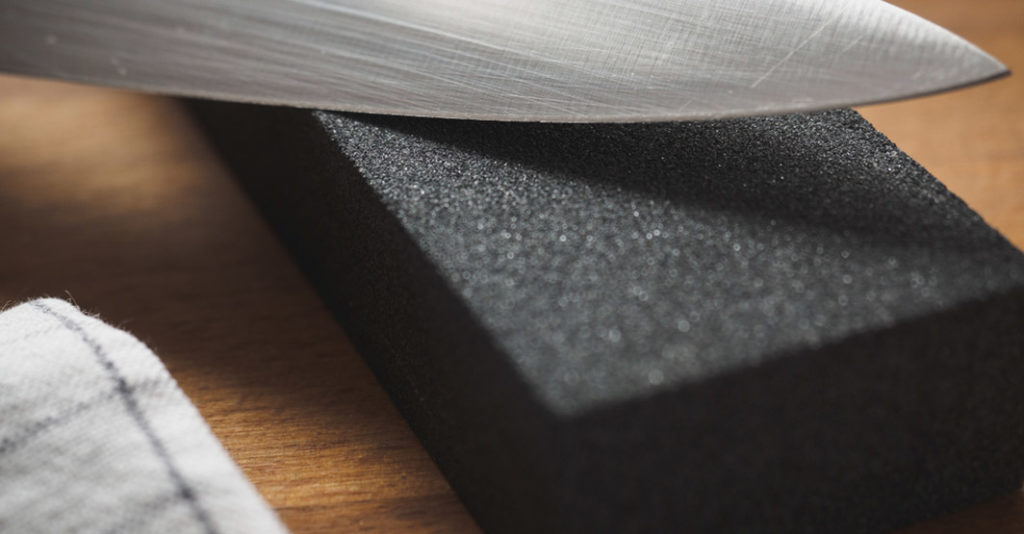
Yes, you do need to clean a sharpening stone occasionally. It removes the dull metal from each edge sharpened on them. As a result, tiny metal filings can build up in the pores of the stone’s surface, eventually causing scratches or damage to knives honed across the filings.
- To clean the metal filings out of the whetstone, a cleaning oil is needed.
- Use just a few drops of the oil and apply it to the whetstone using a circular movement.
- When you notice the metal filings being drawn from the pores and into the cleaning oil, wipe away the debris with a paper towel.
- Run the sharpening stone under water to ensure the majority of oil and filings is washed away.
- Dry the whetstone with a disposable rag or paper towel rather than your kitchen towel, as metal filings may be transferred to the fabric.
Keeping a Whetstone

Once fully dry, simply store your whetstone in a drawer wrapped in a clean towel. You may find it helpful to lean the damp stones against a wall during the drying process to ensure there is adequate airflow across all surfaces.
If you are using your stones every couple of days, it may be more efficient to store them in water in a tupperware. If you choose to store your stones in water, add a cap full of bleach to prevent bacteria growth. Change the water weekly. Note that ceramic stones, diamond stones and oil stones cannot be stored in water.
The Disadvantages of Other Sharpeners
Honing Rods and Pull-Through Sharpeners
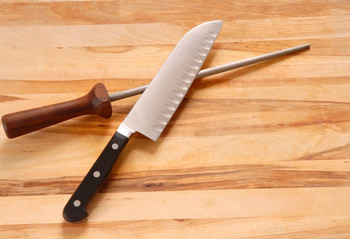
Honing rods and pull-through knife sharpeners are helpful for the quick, everyday maintenance of kitchen knives. Both of these sharpening tools are designed for keeping an already sharpened knife sharp for as long as possible. However, they are not capable of reprofiling a dull knife.
A honing rod maintains the knife’s sharp edge by temporarily straightening the burr of the knife. And a pull-through sharpener relies on pieces of tungsten carbide for honing, which can be rough on kitchen knives. The pull-through action makes for inconsistent honing, wearing away too much or too little metal and creating a jagged edge.
Guided Sharpening Systems
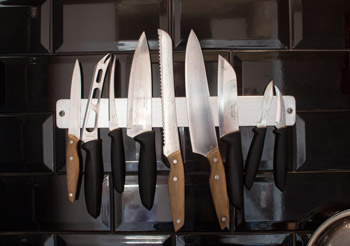
To get (and to maintain) the finest, sharpest edge, a thin layer of dulled metal must be carefully removed from the knife, scissors, etc. A guided sharpening system or a whetstone will be required.
You’ll find that sharpening stones outshines most guided sharpening systems in regards to versatility. A guided sharpener is limited to small and medium-sized knives, a whetstone can accommodate every cutlery from tiny razor blades to full-size axes.
A Sharpening Stone Can Make All the Difference
Durability, versatility and simplicity have long set the sharpening stone above other abrasives or sharpening tools. A great sharpening stone is a staple in any professional kitchen and essential for home cooks seeking to up their game. From carving meat to descaling fish, maintaining sharpness in your knives can ease your cooking life. Consider how a 1000-grit glass stone like the Shapton Kuromaku Professional Ceramic can boost your cooking experience today.
